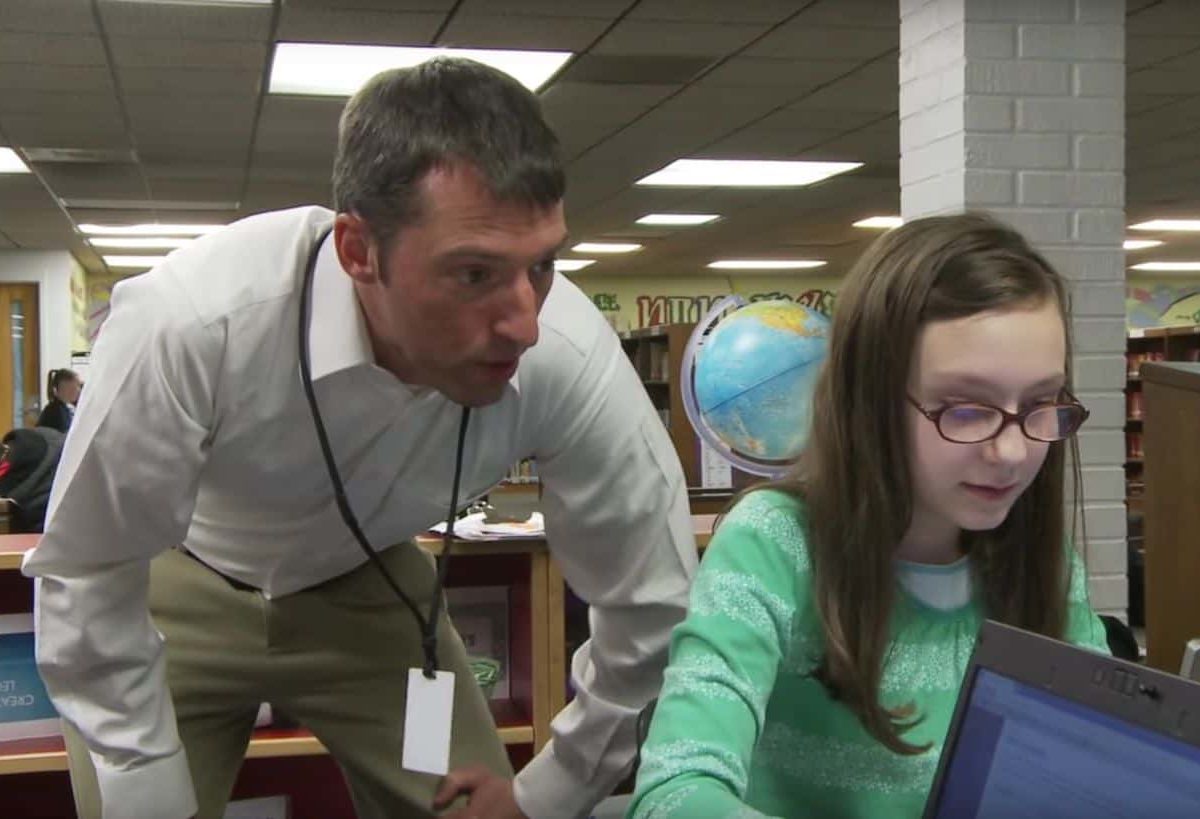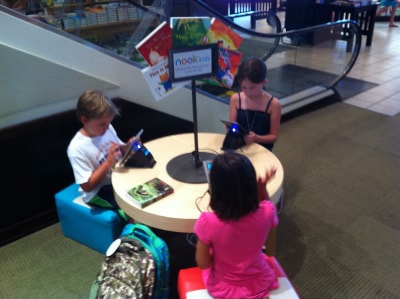
People write letters to the editor to say thanks to Buncombe County teacher Brian Maccarelli. He serves on advisory boards, leads seminars, and participates in extracurricular activities.
In 2009, Buncombe County Schools’ Associate Superintendent for Curriculum and Instruction Susanne Swanger recalls that the recession resulted in serious cuts in school funding. But the county’s school leaders were committed to innovation and developing a course of learning that would create more opportunities for students.
Local education leaders took a detailed and purposeful look at what the county’s schools needed. And when the Race to the Top federal dollars became available, district leaders started working on a plan. Some of the resources went to providing professional development to help educators implement the new and higher learning standards.
“It was a time when STEM (Science, Technology, Engineering, and Math) was an up-and-coming buzz word,” said Swanger. Buncombe County Schools decided to focus on improving science education throughout all grades, build interest and quality science instruction and provide additional opportunities to students who developed a strong interest in science subjects.
“The more we read, the more we wanted to open a STEM-themed high school,” she said. But it wasn’t a matter of simply setting up a specialized high school. There needed to be a pathway to both develop the instructional opportunities to prepare students to succeed in such a school as well as build enthusiasm for it.”
The school, Martin L. Nesbitt, Jr. Discovery Academy, opened last year with 100 freshmen students. There were 140 applicants. A new class of 100 freshmen will enter the school this year — 53 boys and 47 girls. There were 269 applications for those slots.
The effort in the schools is in concert with a community-wide economic development push — the “Asheville Area 5X5 Initiative” — designed to attract and grow 5,000 jobs in sectors already developing in western North Carolina. These career areas include advanced manufacturing, healthcare, science and technology, knowledge-based entrepreneurship, and arts and culture.
Adding just one focused high school wouldn’t be enough, however. Local education leaders knew they needed to do more to build a pipeline of students who wanted to enter the school — or simply wanted to develop an interest in science. They also knew that they needed to do more to provide teachers at all levels with the tools to help them do a better job teaching science.
This is where Brian Maccarelli came in. This former classroom science teacher is now Buncombe County Schools’ latest full time K-12 Science Specialist. At one point before the Race to the Top, one half-time science specialist was covering 42 schools — and that position was in jeopardy because of limited funding.
Maccarelli and his predecessor were tasked with making sure all teachers were aware of the new, higher, standards for science education. They also wanted to make sure educators were ready to implement those standards in the classroom and had the necessary tools to be successful.
Race to the Top didn’t just provide the money for the district’s full-time science specialist or for professional development. It also enabled the district to purchase software and science teaching tools. These resources were tailored to the new standards and designed to help teachers provide new and more interesting opportunities to engage students.
For the lower grades, there is Picture-Perfect from the National Science Teachers Association. Maccarelli said that there are several challenges to teaching science in elementary school. First, the teachers are generalists who instruct students across many areas: language arts, math, social studies and science. Also, some teachers are not as confident teaching science as other subjects.
The Picture-Perfect Science Lessons series combines science and reading, offering easy-to-grasp background information in physical, life, Earth, and space sciences. Elementary school teachers can use the picture books in combination with student-oriented pages to guide student interaction and learning.
Picture-Perfect has been very well received, Maccarelli said, because it combines several instructional areas at the same time. Reading, language arts, and science can be combined — which is a huge help for teachers who face time crunches to do all they need to do with students. “It ties literacy and language arts well with hands-on science,” said Maccarelli.
In middle school, where subject-area instruction is more focused, Buncombe County Schools has licensed Discover Education Science Techbook. This tool has essentially replaced textbooks for many teachers. “A teacher identifies content and then can have students log in and find content and activities — all matched up to state standards,” said Maccarelli.
Techbook offers interactive lessons (integrating text, video, audio, and hands-on activities in virtual labs) at a variety of levels, so assignments can address a specific student’s skills and abilities. These tools can be used individually, in groups or for entire classrooms.
The program allows for individual student use or group learning in clusters. Additionally, he said, for the many students with online access at home, they can make assignments that can be done either in, or outside, of class. “You can move the lab to any classroom and have your science lesson,” Maccarelli said. “Students can have the lab experience through technology. I noticed a high engagement rate with the students.”
Then there’s Gizmos — an online library of science simulations. It is a lab without the mess or danger. Bunsen burners, gurgling, steamy chemical reactions smelling up the classroom, scalpels for frog dissections, and all the teacher supervision required — they’re out. Want to have a hands-on activity concerning radioactive materials? You won’t need Hazmat suits for this virtual experiment.
Students log into the Gizmos system after the teacher has selected the lesson and, using the Gizmos tools, designed the activity — including questions for assessing what’s been learned. “The labs are open-ended,” said Maccarelli. “It’s not a cookbook.” In the way kids play video games, they interact with the lab exercises, pouring liquids and seeing the reactions, slicing open a frog or heating up chemicals.
To get an idea of how effective these online tools are in the classroom, Buncombe School officials just point to online accesses.
Early on, in 2010, teachers were getting training. The software providers, along with local educators, provided training and workshops. Discovery Techbook provided 13 hours of face-to-face training. In the case of Gizmos, for example, the company not only provided workshop leaders, but spent time in the classroom with teachers and modeled lessons.
At the end of the 2010-2011 school year, for example, there had been 6,000 teacher log-ins to Gizmos. Two years later, they were up to 89,000.
Paying for these tools now that Race to the Top funding has ended presents a challenge, said Maccarelli. But it is a priority for the school system, and others in the community are rallying to meet the need. Grant funds are being identified. The schools have even received a grant to add a STEM coach for the elementary schools. While some may argue that Race to the Top only provided a short-term solution, schools in Buncombe County have been energized by the progress generated through Race to the Top funds. The challenges have become opportunities to keep up the positive momentum generated through Race to the Top.
The online textbooks and teaching resources have been critical for Buncombe County Schools. “It’s constantly growing, evolving, changing, so if the standards change, it (the online instructional services) changes with it. They’re aligned with our standards,” said Maccarelli.
Hear Maccarelli and other Buncombe teachers share about their experience here:


